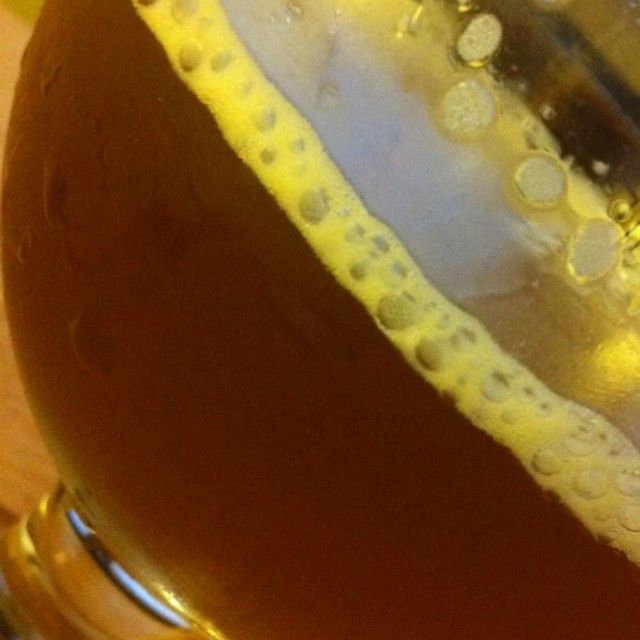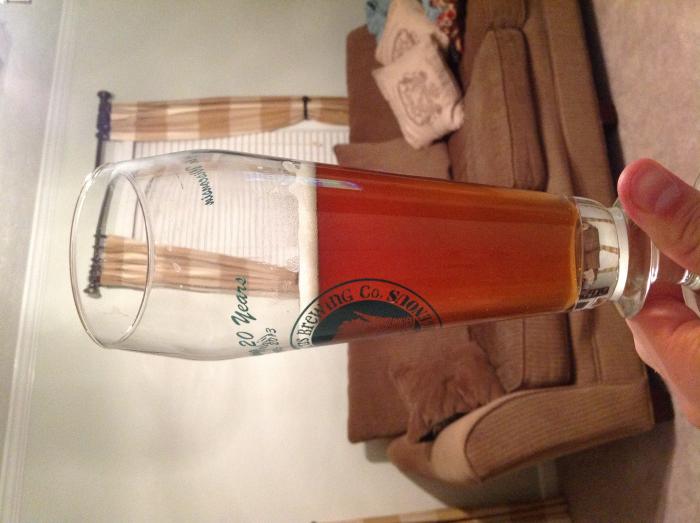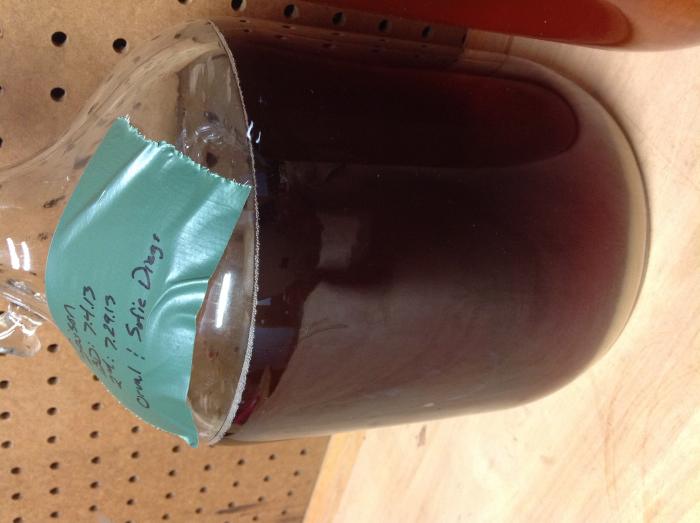killsurfcity
Well-Known Member
- Joined
- Feb 11, 2009
- Messages
- 170
- Reaction score
- 18
heh heh!
pardon my annoyance, but i'm pretty tired of lazy answers at this point.
pardon my annoyance, but i'm pretty tired of lazy answers at this point.

It takes a lot of splashing to do any damage, someone on basic brewing years ago, (Palmer, or Chris Colby of BYO) said that in order to truly provide enough O2 to oxydize our beers it would take pumping an entire one of our red oxygen bottle/airstones into our beer AFTER fermentation is complete.
Most of the splashing intentional or accidental that we do in the course of our brewing will not harm it...
That doesn't mean you want to dump your carboy into the bottling bucket, or do other careless things. You still want to be gentle when moving your beer from vessel to vessel.
BUT it does mean that if we spalsh, or have to use our autosiphon to pump our beer is something goes wrong, that we don't need to panic about it.
I've had all sorts of problems, like bottling a blond ale with peaches in it,that kept jamming the bottling wand and auto siphon, and the beer's still turned out just fine.
And beside Oxygenation damage isn't immediate anyway, most of us would have our beer drunk long before it would happen.
I had some major f-ups with bottling on occasion and still haven't oxydized a batch.
The Flavors of Oxidation
The majority of the stale flavors that develop as beer ages are the result of oxidation. Molecules of the various flavor compounds and alcohols within the beer undergo a chemical reaction with oxygen to form the molecules responsible for the stale taste. Fusel alcohols, acetaldehyde, and trans-2-nonenal are the primary culprits responsible for the majority of off-flavors associated with stale, oxidized beer, but other compounds also contribute.
The specific way in which oxidation impacts the flavor and aroma of beer depends on many details specific to the particular type of beer that is experiencing oxidation. If trans-2-nonenal is formed in a lighter beer, it may cause a papery or lipstick-like flavor. Trans-2-nonenal (an aldehyde compound) has a flavor threshold of about 0.1 ppb. The aroma characteristics of many lighter beers can also be affected by oxidation. The malt character initially present in the aroma of a fresh beer may change in a way that causes the aroma to be perceived as somewhat honey-like. This is due to the formation of 2,3-pentanedione. While this may not necessarily be unpleasant, it is probably not what the brewer originally intended.
Darker, fuller-bodied beers tend to be affected differently by oxidation. As a darker, fuller-bodied beer becomes oxidized, rich malt flavors and aromas are replaced by sweeter, sherry-like flavors. These sherry-like flavors are the result of the oxidation of the malty-tasting chemicals in beer called melanoidins. Darker, fuller-bodied beers contain lots of melanoidins. The oxidation products of melanoidins are myriad and have a wide range of flavors. One of the products of the oxidation of melanoidins is benzaldehyde. Benzaldehyde has an almond-like flavor and is a primary contributor to the sherry-like flavor in oxidized beer. A small amount of these sherry-like flavors may add complexity to the flavor and aroma of certain strong beer styles like dark Belgian ales and barleywines, but even a small amount of these sherry-like flavors is usually not considered appropriate in lighter, lower alcohol beers. Even in darker, fuller-bodied beers, too much oxidation of the malt melanoidins will eventually cause the original rich malt flavor of the beer to take on a more toffee-like taste, and then, eventually, to be lost altogether.
Another flavor that may be caused by oxidation is the buttery/butterscotch flavor of diacetyl. Diacetyl is formed by the oxidation of alpha acetolactate (a normal by-product of yeast metabolism). Many breweries use brewing techniques to prevent the presence of the alpha acetolactate precursor in the finished beer, but some breweries use techniques that allow this precursor to be present. If alpha acetolactate is present in the finished beer, it will eventually oxidize to diacetyl, and the intensity of the characteristic buttery/butterscotch flavor will increase as the beer ages.













![Craft A Brew - Safale S-04 Dry Yeast - Fermentis - English Ale Dry Yeast - For English and American Ales and Hard Apple Ciders - Ingredients for Home Brewing - Beer Making Supplies - [1 Pack]](https://m.media-amazon.com/images/I/41fVGNh6JfL._SL500_.jpg)
blackjaw, no chance that sunlight got to some (I have no idea why that would make a difference).....what about temperature swings, anything possible there? there is a possible variable here that can't be measured easily, and that is that these sanitizing compounds effect the ph of the water they're contained in. I wonder if rather than an oxidation-type effect we are seeing a ph effect of the sanitizing residue?





there is a potential flaw in the argument that the color isn't due to oxidation because the beer doesn't taste oxidized. the amount of O2 required to react with something in the beer (say, metals or some other chemical) could be a lot lower than the taste threshold.


RE: AndrewCooperGT ~ Can you be more specific than "Brett dregs"?
It seems to be some sort of infection that stays in suspension causing light to scatter and produce the color purple. It may not even be limited to a specific species.

I had a similar problem with an IPA beer I recently brewed - it turned murky brown/red after bottling, even though it was a nice golden colour before.
https://www.homebrewtalk.com/f36/beer-darkened-during-bottling-402445/
Someone locally suggested it may be due to too concentrated Starsan during the sanitation phase, but I have no idea. I am at a complete loss as well to explain it as two bottles only darkened moderately (went from golden yellow to a light murky brown), but the rest darkened so much as to more resemble a murky amber ale.
Whether oxygen is directly or indirectly the cause, it certainly plays a role. Here is a picture of the same beer (a pale sour beer aged in a wine barrel). The only difference is that the one on the right was poured 10 days ago and left in my cool/dark basement until tonight. The one on the left is freshly poured.
The open glass was left at room temp uncovered but in the bottled beer is insulated from oxygen. There is little oxygen left in, at the top of the bottle.
I had the exact same thing happen to me. All brett brux trois primary, pale meets IPA, warrior bitter, nelson sauvin and motueka late hops, nelson sauvin motueka and citra dry hop.
This is a sample poured after I took the FG reading:

...and this is from after I opened a bottle 6 days later (fully carb'd BTW):

I'm going to let it sit in bottles for a few more weeks
